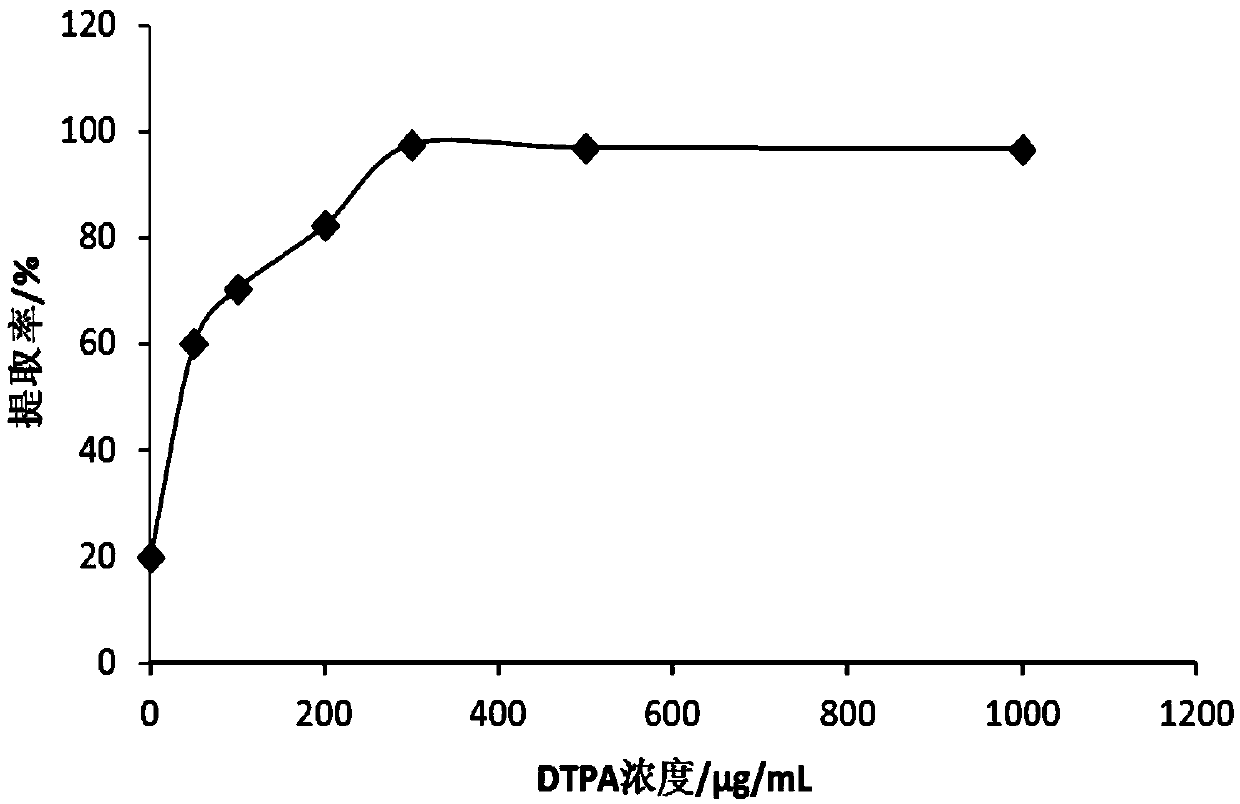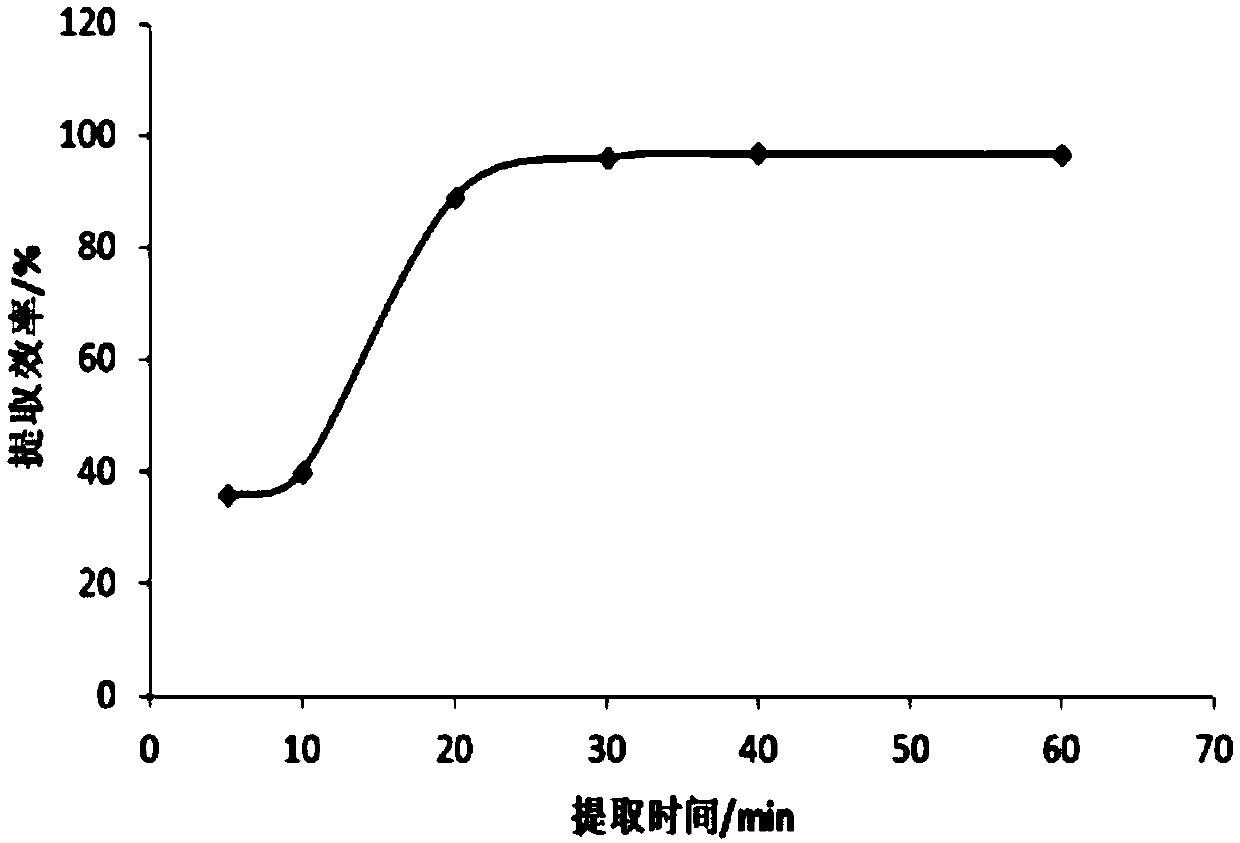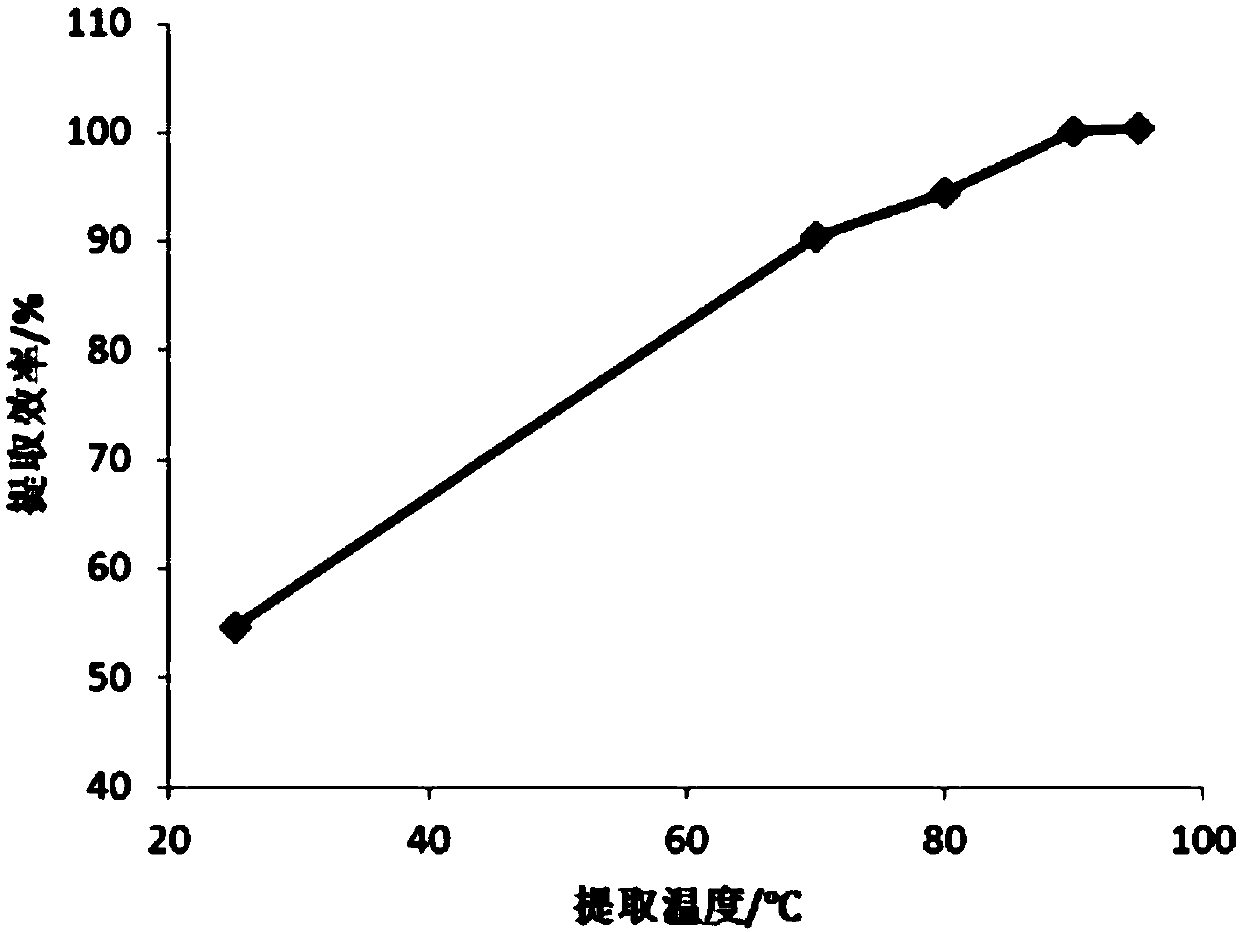Method and kit for rapidly and selectively detecting added aluminum in food
A selective, kit-based technology, applied in the direction of material analysis by observing the effect of chemical indicators, and analysis by chemical reaction of materials, etc., can solve the problem of inaccurate results, inability to achieve selective detection, time-consuming, etc. question
- Summary
- Abstract
- Description
- Claims
- Application Information
AI Technical Summary
Problems solved by technology
Method used
Image
Examples
Embodiment 1
[0025] A detection kit for rapid and selective detection of aluminum added in food
[0026] The kit contains three detection solutions, which are detection solutions A, B, and C. The components are as follows:
[0027] Detection solution A: DTPA solution with a concentration of 3000μg / mL, the actual concentration in the extraction system is 300μg / mL
[0028] Detection solution B: bismuth nitrate solution with a concentration of 3000 μg / mL, the actual concentration in the color development system is 300 μg / mL
[0029] Detection solution C: is composed of chromazurin S solution (1g / L), TritonX-100 solution (3%wt), CATB solution (3g / L), ethylenediamine-hydrochloric acid buffer solution (pH6.7~7.0) according to The volume ratio of 3:1:3:3 is mixed and prepared, and it is a mixed reagent of chromazurin S. Among them, chrome azure S solution and CATB solution are prepared by 50% ethanol solution as solvent, TritonX-100 solution is prepared by pure water, ethylenediamine-hydrochlor...
Embodiment 2
[0031] A detection kit for rapid and selective detection of aluminum added in food
[0032] The kit contains three detection solutions, which are detection solutions A, B, and C. The components are as follows:
[0033] Preparation of detection solution A: Weigh 0.15g DTPA solid and 0.15g NaOH solid into a 50mL centrifuge tube, add about 30mL water to dissolve, finally add water to the 50mL mark and shake well, adjust the pH with 1+1 hydrochloric acid solution to make it acidic, This is test solution A. When preparing test solution A, a small amount of alkali is added because DTPA is insoluble in water. By adding alkali, it undergoes an acid-base neutralization reaction to produce a water-soluble sodium salt.
[0034] Preparation of test solution B: Weigh 0.15g of bismuth nitrate solid into a 50mL centrifuge tube, add about 30mL of water to dissolve, and finally add water to the 50mL mark and shake well. This is test solution B.
[0035] Detection solution C: is composed of c...
PUM
 Login to View More
Login to View More Abstract
Description
Claims
Application Information
 Login to View More
Login to View More - Generate Ideas
- Intellectual Property
- Life Sciences
- Materials
- Tech Scout
- Unparalleled Data Quality
- Higher Quality Content
- 60% Fewer Hallucinations
Browse by: Latest US Patents, China's latest patents, Technical Efficacy Thesaurus, Application Domain, Technology Topic, Popular Technical Reports.
© 2025 PatSnap. All rights reserved.Legal|Privacy policy|Modern Slavery Act Transparency Statement|Sitemap|About US| Contact US: help@patsnap.com



